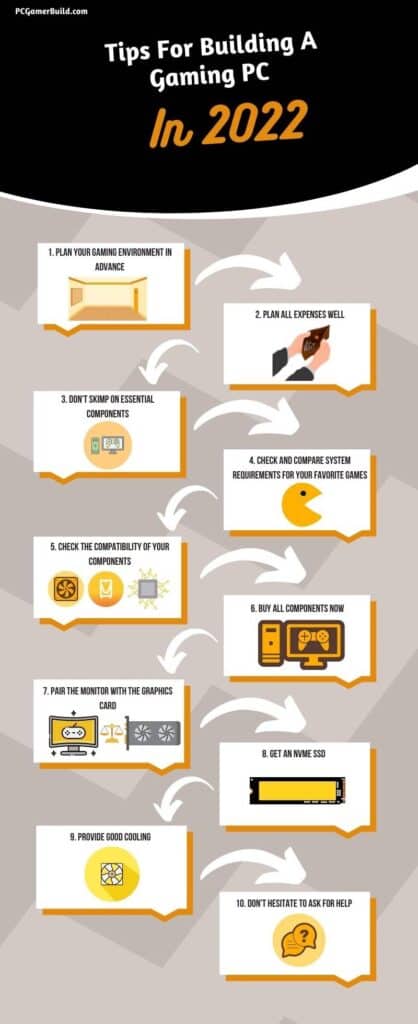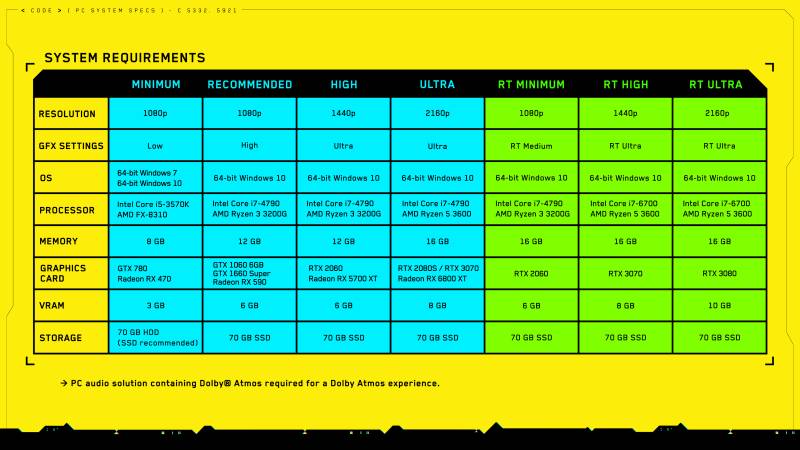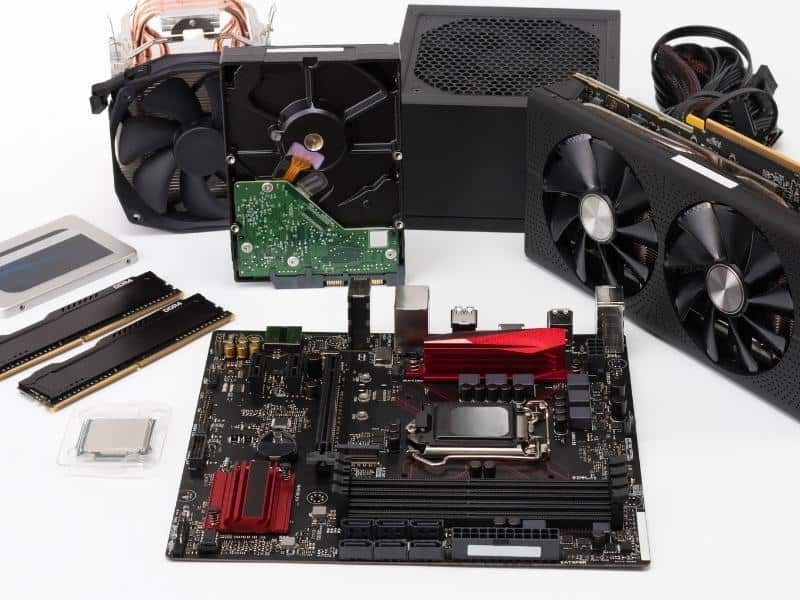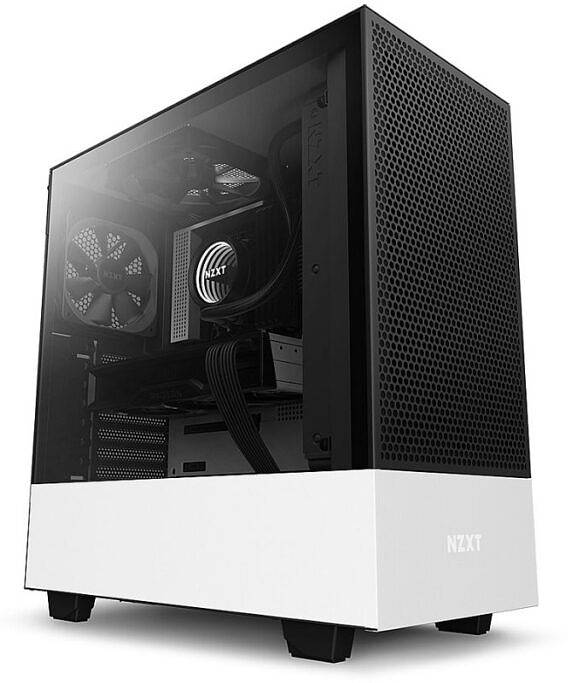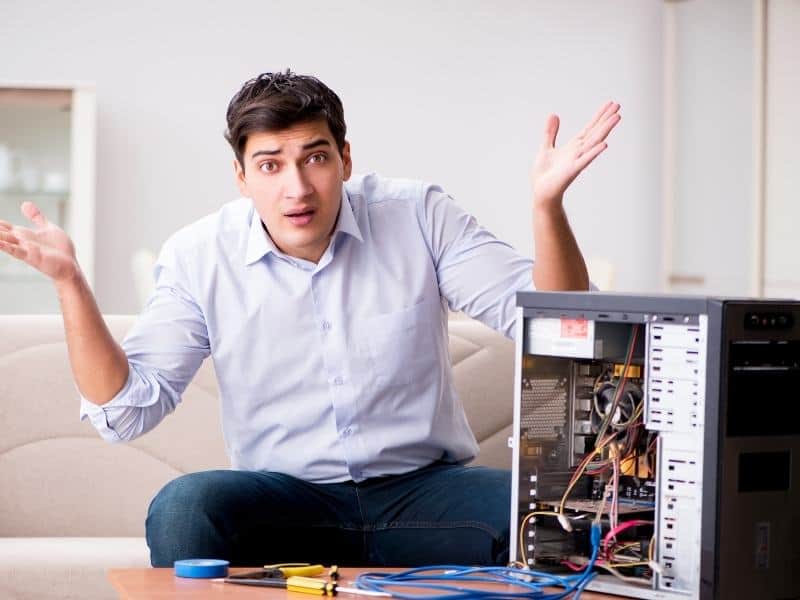Are you looking for good tips for building a gaming PC? You are in a good place. If you want to get involved in building a gaming PC, you need to know what challenges you may face and how to deal with them.
I’ve gathered ten tips in one place that you should read before embarking on building your first gaming PC. Also, some recommendations may be helpful if you are upgrading your existing PC.
The process of building your first PC may seem like a real adventure, but with the right help and advice, you will be delighted in the end.
Table of Contents
1. Plan your gaming environment in advance
If you are building your PC from scratch, you must also consider the environment where you will place it. Have you invested a few thousand dollars in your uber-cool gaming PC, and you have nowhere to put it? Is the PC case under the table? No chance.
So plan your environment well to show off your “beast” and enjoy gaming fully. Make sure your gaming table is spacious and functional and you have space to accommodate a gaming chair, multimonitor setup, speakers, etc.
2. Costs
Do you have a (un)limited budget? The budget is significant because it depends on your direction when buying a future computer or upgrading an existing one. If you know your financial limitations precisely, you will have to adjust or set priorities.
You have planned a lavish and expensive gaming case, a powerful and high-quality power supply unit, a pile of memory that runs at the highest speed, the most powerful graphics card, etc. Desires are one thing, and reality is another. Make a good plan in the spreadsheet (Excell) and rank the components by importance and price in a limited budget. It will be clear where you need to spend more and less money.
The example in the picture below shows that the planned budget is $ 2,000, which we broke down thanks to the stronger components (red color). So, you have to take a cheaper graphics card, motherboard, processor, etc., to fit into your planned budget.
3. Don’t skimp on essential components
Suppose money isn’t an issue. You can afford the best you currently have on the market and enjoy top-notch gaming for years to come. However, most customers have a limited budget and must balance desires and possibilities wisely. You usually need to focus on essential components, such as graphics cards or processors, while saving on other parts and peripherals.
If you don’t intend to do a serious overclock, you don’t need a motherboard with a top chipset, the fastest memory, and an expensive variant of water cooling. For example, focusing on the fastest AMD Ryzen 9 5950X will work fine on a motherboard with a B550 chipset and a memory speed of 3200Mhz. 16GB of DDR4 RAM is enough for pleasant gaming. You can find an excellent case for under $ 100. So, evaluate which components are most important to you and do not skimp on them.
4. Check and compare system requirements for your favorite games
Perhaps the best way to ensure that the graphics card or processor you are buying suits your needs is to check the system requirements of your favorite game(s). Each manufacturer throws out a list of minimum and optimal hardware requirements that you must meet to enjoy playing your favorite game.
Compare lists of system requirements from multiple favorite games to get an idea of what hardware you need to play smoothly. The example provides system requirements for three popular games: Halo Infinite, Cyberpunk 2077, and Far Cry 6.
Halo Infinite PC system requirements
Cyberpunk 2077 PC system requirements
Far Cry 6 PC system requirements
5. Check the compatibility of your components
This tip is also essential so that you don’t end up in a situation where a newly purchased motherboard or graphics card cannot physically fit in your case. To avoid this scenario, carefully study the technical specifications (dimensions) of all the components you want to procure. Start with the PC case you have or are about to get. Can it fit everything you intend to install?
Make a list of all the parts as I did for the costs, and double-check the dimensions of the components – don’t make it difficult. Don’t get a too small or too big case for your gaming PC.
6. Buy all components now
When you raise the planned money to make or upgrade your computer, take all the parts right away. Don’t wait for the new generation of components to appear all the time because you need a computer now, don’t you? Also, avoid buying parts one by one over an extended time, as the warranty may expire, and you may accidentally or intentionally spend the money for other purposes.
Another problem you may encounter even though you have the money to buy is the availability of parts to deliver. Due to the global pandemic, the crisis with superconductors, mining, etc., there may be a rise in prices or delays in providing the parts you have ordered. Look for the components you want at different points of sale, compare prices, and check availability and delivery times. Always have an alternative to the parts you have planned.
7. Pair the monitor with the graphics card
Purchasing a new graphics card should follow the monitor’s characteristics that you have or are about to purchase. For example, if you have a monitor with a maximum refresh rate of 75Hz, your new GeForce RTX 3080 graphics card will not be able to display more than 75 frames per second (FPS) on such a monitor.
Of course, the reverse situation is not good either, when your graphics card is weak, and the monitor is too strong. To avoid frustration in games, always pair the power of your graphics card with the capabilities of the monitor.
8. Get an NVMe SSD
Every severe gamer will not allow himself to install a slow HDD or SATA SSD, which is also eroded by the ravages of time. I recommend purchasing a PCIe NVMe SSD Gen3 or Gen4 to load all your games with lightning speed. If your budget is limited, get an NVMe SSD of at least 512GB and store your essential data on an external or internal hard drive. Of course, note that your motherboard has an M.2 slot for installing PCIe NVMe SSDs.
9. Provide good cooling
Gaming PC systems are known to heat up more than general-purpose PC, so you need to properly cool the components inside the case. So for good cooling, pay attention to the following:
- Choose a case with good airflow or with the possibility of installing many different sizes of fans and radiators for water cooling.
- The case must have space for cable management that will not bother you, and along the way, good cable management will allow unobstructed airflow.
- The case with tempered glass has slightly lower cooling performance but a better aesthetic atmosphere. I recommend that the front panel is not glass or closed but a fine mesh through which cold air is easily sucked in.
- Install an AIO water cooling system for the processor and the graphics card if finances allow. A liquid cooling system will cool your heated system more efficiently and quieter than air cooling.
- If you are already buying RGB fans for the case, pay attention to their cooling performance so that they are not just a decoration.
10. Don’t hesitate to ask for help
Building your PC for the first time can be a big challenge. I recommend that you have someone more experienced next to you, but if that is not the case, you can rely on the instructions that come with the new components (primarily for the motherboard). In addition, you can find handy guides on the Internet where the whole process of building a PC from scratch is explained step by step.
Also, don’t avoid using Youtube because there are a lot of valuable videos, maybe just about the specific configuration you’re assembling. There are excellent groups on Facebook regarding building computers, so there will surely be someone to help you with any doubts.

